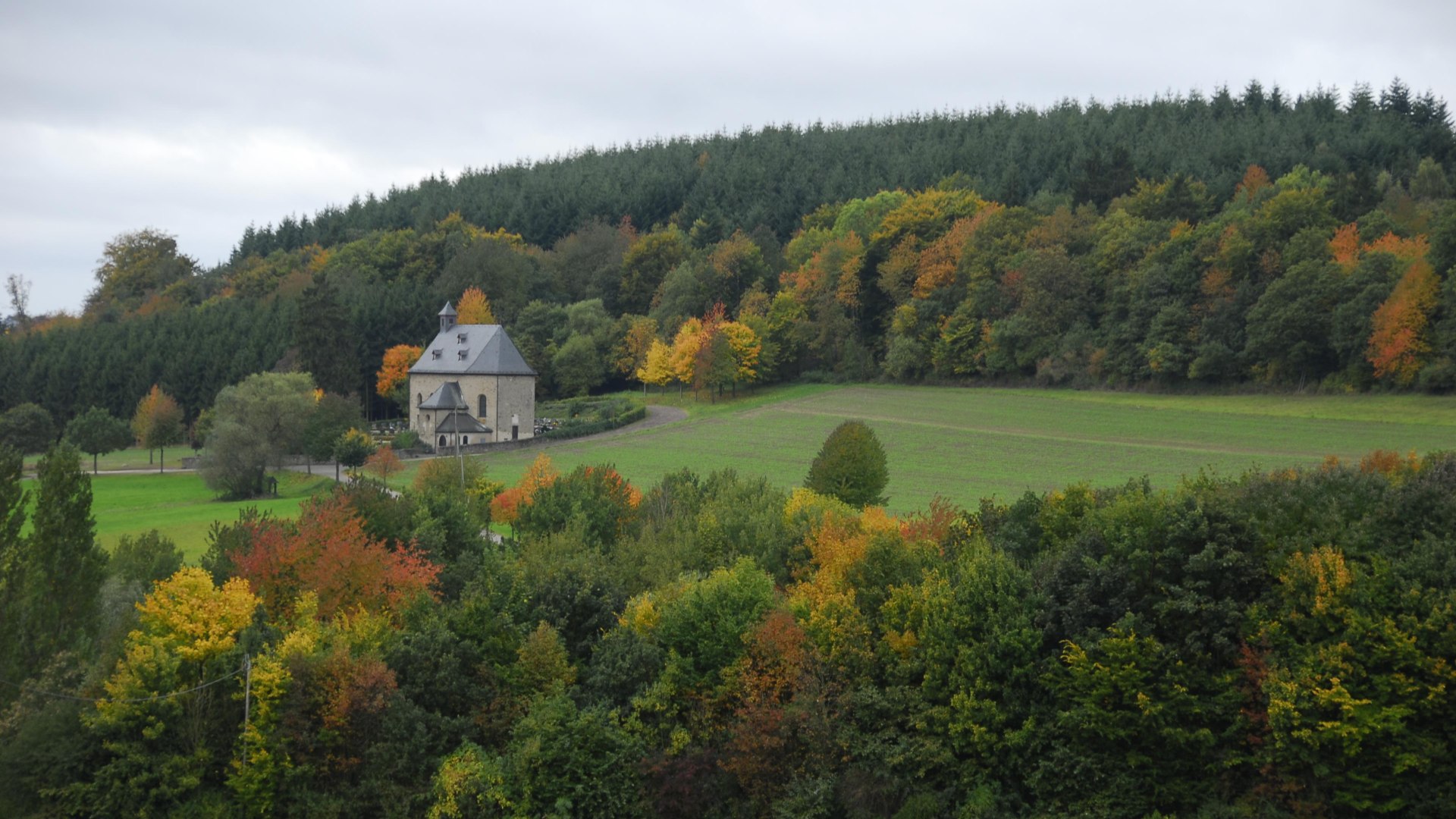Wallfahrtskapelle St. Quintin
St. Quintinstrasse, 56281 Karbach
SANKT QUINTIN Saint Quintin is one of the oldest churches in Hunsrück. The origin of the farm Quintenach, a church of the same name as well as the settlement Karbach (at that time still called Büllingisheim or Bullingsheim) goes back to before the year 1000, one assumes even to the time of the Celts. For the first time St. Quintin was mentioned in a confirmation document from the year 1109 by Pope Paschalis II. The small pilgrimage church captivates by its unusual appearance, a wonderful situation directly at the edge of the forest and the source of the holy Quintins directly in front. It is adorned only by a gable rider instead of a large bell tower. The impressive baroque high altar, the Last Supper fresco and the wooden figure of St. Quintin can be visited on Sundays during the summer months. There is a legend in this area that St. Quintinus passed through our region with his flock of sheep around 800 AD. It was hot and the valleys and heights were without water. St. Quintin (or Quentin as it is also written) touched the earth with his staff and a clear spring gushed forth. The church of St. Quintin is said to have been built on this spot. The spring still gushes today, to the right of the entrance to the cemetery. Even in the hottest summer it still carries water. The legend of the sunken bell St. Quintin's Church used to have a real tower. However, it had become dilapidated and the three bells hanging there had to be placed elsewhere. The story goes that one of them was sold to Wellmich near St. Goarshausen for a cartload of strawberry wine. The second one went to the St. Anna church in the center of Karbach. However, with the third, the largest bell, the men from Karbach had little luck. They loaded it on an old wagon and wanted to bring it to Karbach. The roads were not developed at that time and the meadows were very swampy. Because the bell was so heavy, a wheel broke on the way and the bell fell from the wagon onto the meadow. Quickly, a chain was put around its body, and nags were harnessed in front of it to pull it to solid ground. But they did not succeed. The next morning the bell had sunk deep into the swamp. It was never pulled out again. Even now it lies in the mire and it is said that whoever passes by this place at the midnight hour on Christmas Eve can hear it ringing.







